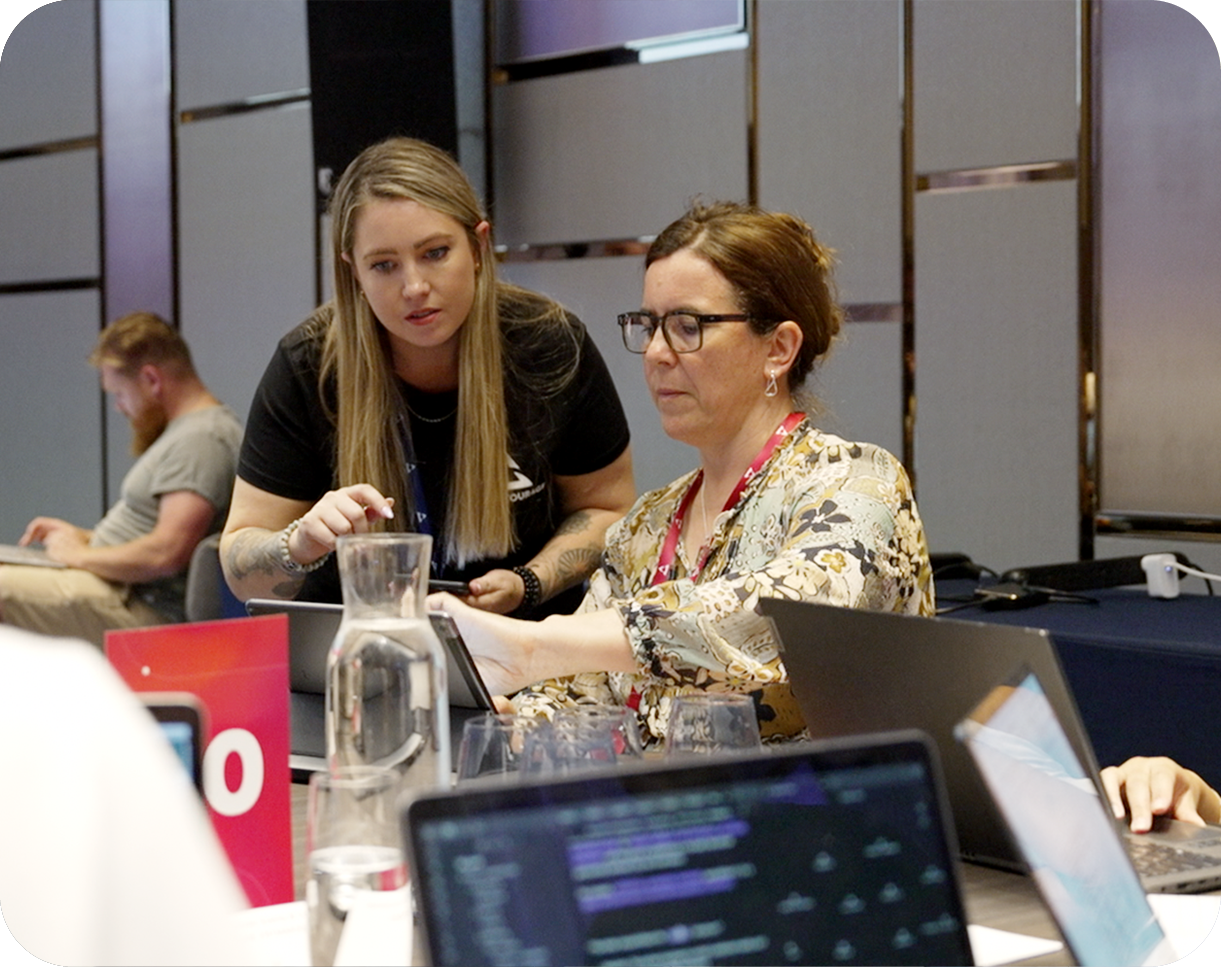SEO testing is an important part of optimizing your search engine optimization workflow and eliminating the guesswork from your strategy. Still, despite its importance and the fact that this concept isn’t new, many companies overlook it.
What is SEO testing? Why should you care about it? And how can you do it yourself for maximum impact? Read on to find a comprehensive guide!
What Is A/B Testing?
A/B or split testing is a testing technique that involves comparing two versions of something (e.g., two web pages, pieces of content, headings, etc.) with the goal of determining which variation performs better.
What Is A/B Testing in SEO?
When used in SEO, the concept of this tactic remains the same - to compare two different variants of something and detect which performs better. However, the focus is placed on SEO-relevant webpage elements, including:
- Meta titles and descriptions;
- Headlines;
- Content layout;
- URL structure;
- Content format;
- Content length;
- Calls to action (CTA);
- Keywords;
- Loading speed fixes;
- Mobile-friendliness of the design, etc.
To leverage SEO testing, marketers can make slight changes to these site elements and compare their performance based on crucial optimization metrics, such as bounce rate, click-through rate (CTR), conversion, etc.
Why Does SEO A/B Testing Matter?
SEO is known for its ever-changing nature and competitiveness, which makes it absolutely pivotal to set up ongoing performance monitoring and strategy improvement. These days, there are plenty of tools that can help you keep an eye on the key metrics and optimize your outcomes. If you aren’t using any yet, you can equip yourself with the needed tools with the help of independent software comparison sites like Top10SEOSoftware.com that help you pick the best analytical tools for SEO success, and it’s crucial. Yet, sometimes, you may want to make faster improvements in your strategy and make your efforts even more data-driven, and that’s where SEO testing can come in handy.
In a nutshell, SEO split testing is used to eliminate the guesswork from your daily efforts and make them more efficient. For example, if you want to boost CTR, you can compare different variations of a title tag and meta description to see which generates more clicks. Similarly, if you want to improve your bounce rate, analyzing different headings and content layouts can help reduce the space for error.
In the long run, split testing can help you gain multiple benefits, including:
- Improved user experience;
- Better engagement;
- Higher conversions;
- Lower bounce rates, etc.
Most importantly, it enables you to make these improvements faster by basing them on actionable insights and lowering the risk of errors.
How to Do A/B Testing for SEO: Setting Up the Environment
In order to leverage the AB testing marketing technique for SEO success, you need to first prepare the right settings for it. Here is how to prepare step by step:
Setting a Goal
The success of your experiment primarily depends on how accurately you select the elements and metrics. First, you must have a clear goal. This goal must align with your overall business objectives and be measurable to help you determine the specific metrics to use.
Picking the Metrics
When you have a clear objective in mind, it shouldn’t be hard to understand what performance indicators will help you accomplish it. The main tip here is to focus on one specific variable at a time to isolate the result.
Picking the Right Tool
Although performing an A/B test SEO manually is possible, it can be too daunting. Besides, there is no need to do it now when there are plenty of auxiliary tools to help you. Specialized tools can help you streamline the process and reduce the time spent on your end. Besides, they can help ensure more accuracy in the results.
Explore the options available on the web to pick a tool based on your budget and needs. You can leverage Google Analytics integrations to eliminate the challenges of this choice. Currently, Google collaborates with the following providers to replace its old product, Google Optimize:
- AB Tasty
- Optimizely
- VWO
Setting a Baseline
Typically, SEO split testing is conducted before making actual changes to the original page. Hence, it makes perfect sense to set the performance of your original page as a baseline for your experiment. This will help you not only compare the two elements to each other but also see if they demonstrate better indicators than the old page, which is important to ensure growth.
Thus, before running any experiments, establish a baseline by assessing the performance of your current page.
What Elements to Choose for A/B Test SEO
Using this method for SEO testing opens pretty broad opportunities. Namely, you can use it to experiment with:
- Page headings;
- Content length and formats;
- Title tags;
- Meta descriptions;
- Anchor texts and link placements;
- URL structures;
- Improvements in page speed;
- Images, alt texts, and multimedia placement;
- CTAs;
- Website design and layout (for mobile friendliness or user experience);
- Site navigation;
- Schema markup;
- Canonical tags;
- Landing pages;
- Keywords, etc.
As you can see, you can run experiments with nearly any SEO element. Choosing a specific object for every test eventually gets down to the goals you set.
Here’s a simple A/B testing example to help you grasp the importance of a measurable goal:
Your core goal is to improve conversions. Based on this goal, you will likely want to test your CTA. You need to create a CTA A and CTA B and randomly direct 50% of your audience to one variation and another 50% to another. After sufficient time, you can assess the conversion rate for CTA A and B and pick the one with the highest rate as more effective.
Common Mistakes in SEO Split Testing to Avoid
When you finally get to your experiments, it can feel somewhat frustrating at first. You may face challenges setting objectives, conducting experiments efficiently, and interpreting the results.
Here are some common pitfalls you may stumble into that can hinder the result:
- Falsely selected metrics. When you set an unclear goal for your experiment, you will likely focus on the wrong metrics. Needless to say, this can hinder the results a lot.
- Uneven traffic split. When analyzing two versions of something, the only way to receive accurate results is by splitting the traffic evenly - 50% to your A option and 50% to the B option. Otherwise, you may end up with false deviations on one side or another side of the experiment.
- Insufficient experiment duration. Setting a short timeframe for your experiment can leave you with insufficient or fluctuating data that won’t help you improve your SEO. As a rule, strive for a minimum of seven days or more, depending on the type of data you want to collect. In this case, the more data you have, the more accurate the result will be.
- Running tests during unstable periods. When you want to experiment with SEO elements, it’s crucial to keep in mind any major changes that might affect your traffic, clicks, and other results during an experiment. Namely, it’s not recommended to conduct your experiments during seasonal peaks and drops or search engine algorithm updates.
- Not complying with basic SEO rules and best practices. When comparing two SEO elements, you want them to be perfectly optimized and adhere to best practices, even if you end up not using any of the options. This means you should research and integrate keywords wisely, avoid stuffing, eliminate duplicate content, and apply other practices to ensure the most accurate and positive result.
Top Tools and Best Practices for SEO Testing
Now that you know what you should avoid, let’s talk about the things you should do in your experiments.
First and foremost, you need a reliable tool that won’t let you down. Earlier, we mentioned AB Tasty, Optimizely, and VWO as tools integrated into Google Analytics. Some other options trending on the web include:
- Adobe Target
- Kameleoon
- Unbounce
There are also many other options available out there. It is difficult to tell which one is best for you, in particular, because there is no one-size-fits-all solution. So, be sure to evaluate and compare different options thoughtfully to find a tool that suits your unique needs.
As for the best SEO A/B testing practices, they are pretty standard for everyone, and you’ve read about them earlier. Let’s recap them one more time:
- Set clear goals.
- Choose the right elements to experiment with based on your objective.
- Focus on just one variable at a time.
- Have a clear baseline.
- Make sure your traffic is split evenly.
- Run your experiments for sufficient time and run additional tests when needed.
- Avoid unstable periods to get more accurate results.
- Apply SEO best practices.
How to Analyze A/B Testing Results and Scale Your Tests
When you’ve gone through all the basic steps and performed your experiments for a sufficient amount of time, it’s finally time to analyze the outcomes and make strategic improvements on your website. Although this may feel like the hardest part, in reality, it shouldn’t challenge you too much if you pick a reliable tool and set up everything right.
In a tool of your choice, you’ll typically have a customized dashboard for every experiment, from which you can monitor the key metrics. Your task is to compare the results you see in the dashboard for every element variation and compare them to each other, as well as to the baseline performance you’ve marked.
Use all the insights you’ve collected to critically assess whether any of your variants had a meaningful impact. If not, consider running another experiment. If yes, pick the winning option and implement it on your site.
If your A/B testing turns out to be successful, you can also scale it to gain even more benefits. To do this, follow these tips:
- Analyze why the experiment succeeded and what made a particular variant win. Based on this, outline templates that can be used for future tests.
- Assess the testing strategy that turned out to be winning, find areas for improvement, and leverage it again in the future.
- Detect elements that you can replicate in other areas of your strategy. After running multiple experiments, you may notice that winning variants have something in common, such as visuals, tone of voice, CTA, etc. Identify these elements to apply them sitewide.
- Leverage tools to automate experimentation and optimize your cycle to save more time in the future.
Conclusion
SEO A/B testing is a powerful tool for making your optimization strategy more foolproof than ever. By experimenting with different SEO elements, you can gain valuable insights and improve your site's performance with fewer mistakes.
Now you have a detailed guide on how to make it right. Use the steps and tips we shared here to take your SEO to the next level!
Related Categories
Ryan Terrey
As Director of Marketing at The Entourage, Ryan Terrey is primarily focused on driving growth for companies through lead generation strategies. With a strong background in SEO/SEM, PPC and CRO from working in Sympli and InfoTrack, Ryan not only helps The Entourage brand grow and reach our target audience through campaigns that are creative, insightful and analytically driven, but also that of our 6, 7 and 8 figure members' audiences too.





